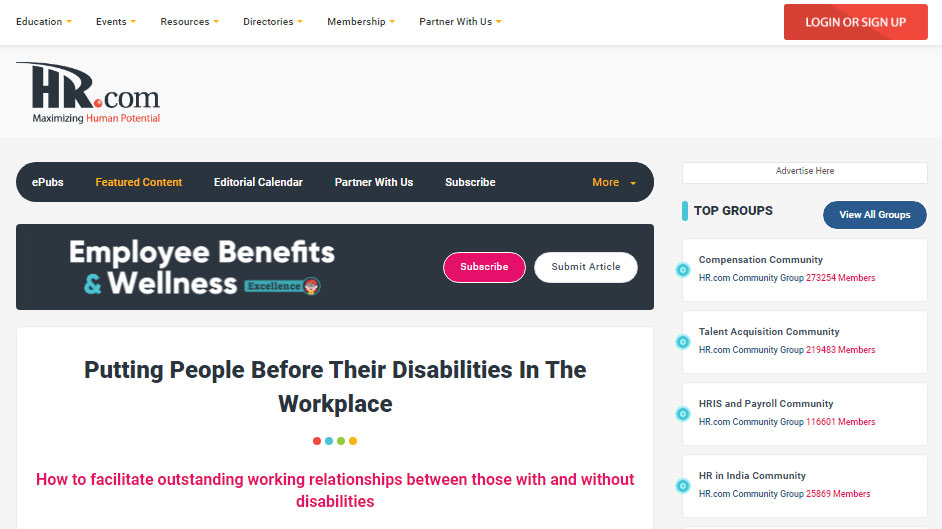
Putting People Before their Disabilities in the Workplace
HR.com, July 2021

How to facilitate outstanding working relationships between those with and without disabilities
The term “Intellectual and Developmental Disabilities” also known as “IDD” refers to disabilities associated with intellectual function and/or physical and developmental differences. Diagnosis requires evidence of limitations in both intellectual abilities and in adaptive skills such as managing day-to-day life activities like food preparation, getting dressed, handling money and other related activities. Some people with IDD have difficulty relating their thoughts verbally which can create a communication barrier between those with and those without disabilities.
They may, instead of using words, use gestures or express themselves through actions or behaviors. These behaviors may not be recognized by some as a form of communication and maybe dismissed or even seen as disruptive. Gaining an understanding of how to communicate with people with various levels of disability can facilitate improved working relationships as well as better satisfaction in the workplace.
Respectful communication is important in any job or relationship. When working with people with disabilities, we must remember that they are people, first, and speak in that manner. For instance, in the second sentence of this paragraph, I used the term “people with disabilities” rather than “disabled people.” Putting the “person” first in language helps to put the person first in our minds, seeing them as a fellow co-worker with a few challenges rather the as the challenge itself. And let’s be honest, we all have challenges and need support, at times. This small but essential concept is central to fostering a respectful environment where everyone is valued.
People with disabilities want the same things that anyone else wants from a job; a sense of purpose, a feeling that their work matters, and the satisfaction of earning a wage. When a company incorporates people with disabilities into their workforce, they are fostering integration into community life and increasing the level of natural supports. This can replace the need for more significant paid support where staff is paid to help them with day-to-day life. Opportunities like these can improve peoples’ confidence, self-esteem, sense of belonging, and overall well-being.
Because many people with IDD have lived lives segregated from others, those without disabilities have often had little interaction with them throughout their daily lives. This can lead to challenges in their own communication skills in relating to those with disabilities. Training is important for all staff to learn about good communication and how to facilitate outstanding working relationships between those with and those without disabilities.
Learning about person-first language, person-centered thinking, understanding how different behaviors may be forms of communication, and about how a different quality of life doesn’t mean a lower quality of life can help to create a work environment that is productive for the employer and where all employees feel valued. And that’s a good thing!
Feature originally published by HR.com.


